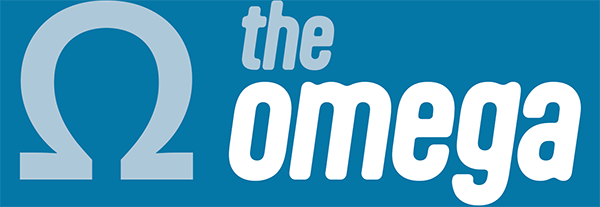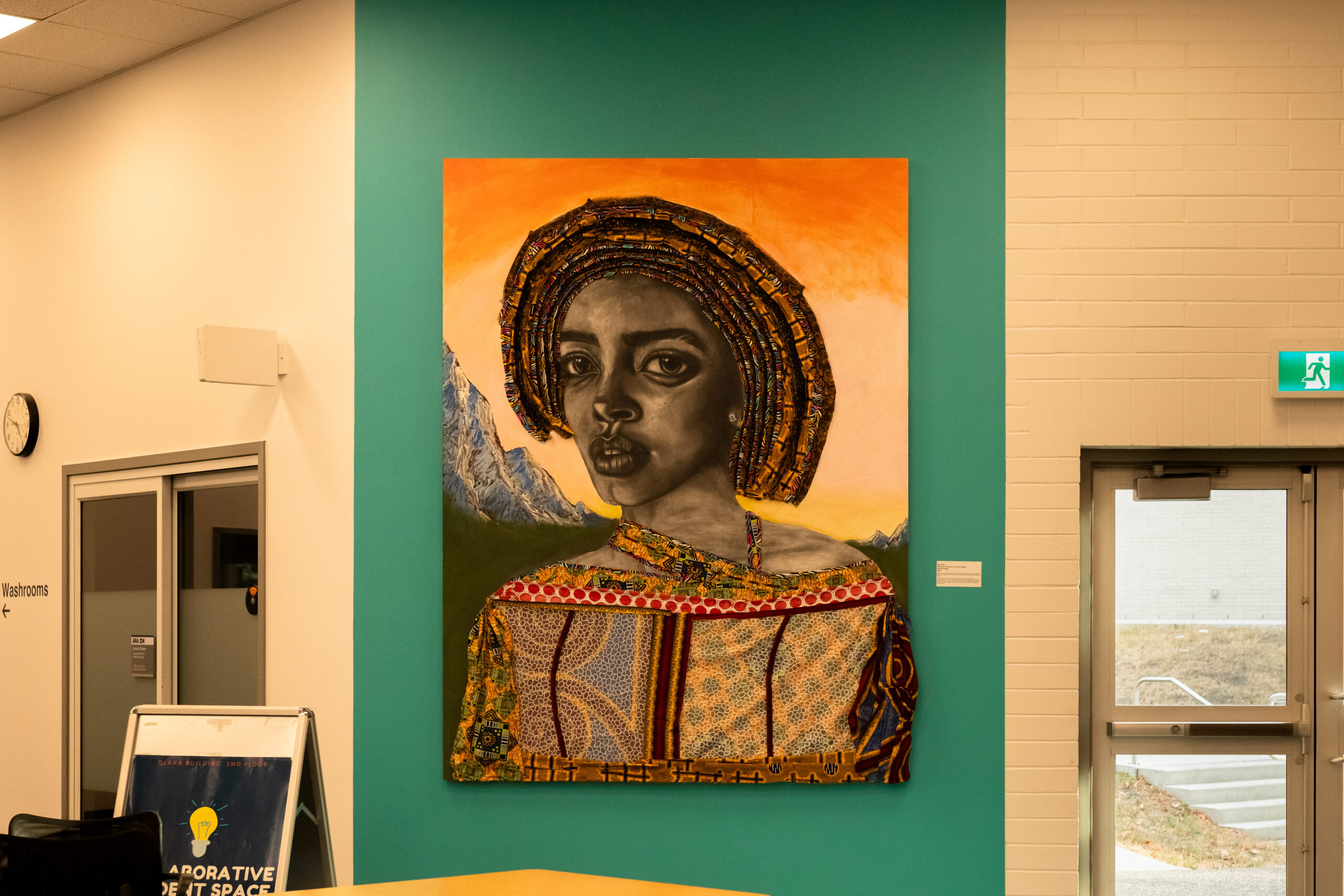Ral Ojah is a Nigerian artist who has recently graduated from the TRU Fine Arts program. Ojah is beginning to make waves in a city where two rivers meet by finding his audience and educating Kamloopsians through the works of his art. His creations explore the theme of liberation, using his cultural identity and materials like Dutch wax fabrics, while being bridged to historical traditions through a contemporary style, such as mixed media and realism.
Speaking with The Omega, Ojah described the connection to the artistic process.
“It’s the process that keeps me going,” Ojah said. “When I start a piece, I don’t know what it will look like. I work through the mistakes and uncertainties, and finally, I see what comes out. That drives me to push further.”
Ojah has been creating art since he was three years old, though Ojah’s devotion intensified around 2019-2020. He credits a range of artists as inspirations, from Kelvin Okafor’s realistic graphite portraits to Yinka Shonibare’s fabric work and Nick Cave’s multimedia approach. “It’s a way to honour their work while making it my own.”
Charcoal eventually became Ojah’s preferred medium. He’s experimented with ink, poster colours, acrylics, and graphite, but patience led to charcoal, which allowed him to fully capture depth and skin tones. Over time, he began combining the materials as a way of his storytelling.
His series, Ifunanya, illustrates this story. Beginning with simple charcoal and graphite, Ojah progressed to large-scale mixed-media works incorporating Dutch wax fabrics. “Infunanya is my push,” he said. “It represents growth, experimentation, and taking risks. By the third piece, I was working large-scale and pushing myself to the limit.”
Another work, “Baby, Please Don’t Go!” is a sculpture of Ojah’s future studio. The piece reflects the tension many artists may face: the possibility of art leaving the soul of an artist due to having no time due to work. “Why it’s termed, Baby, Please Don’t Go! Is because during the final year of art school, we tend to either leave the art, or the art leaves you. Because you may still be painting, but you won’t have that amount of time due to work.” Ojah said.
The inclusion of Dutch wax fabrics is central to Ojah’s work, linking past and present.
“The fabric is called Dutch wax fabric, and it’s tied to Indonesia, the batik. Back then, the Dutch masters tried to capitalize on it and make a market out of it. The indigenous rejected it due to its low quality; they used their hands to make fabric while the Dutch masters used machines.” Ojah explained. “We are not the people who bought those fabrics and appropriated it. Now we do it in different ways; it’s taking an identity that has been used to ridicule you and changing it into a contemporary use. I can style it with my shirts or trousers, using that and making it my identity in a sense. The fabric is not just a piece of artwork; it’s a statement for those who now see the statement. It’s reconciliation.”
His work is indubitably making a statement, letting the art speak for itself. “I put it out there and let the art attract its audience, even if someone calls it hideous, that reaction is still meaningful; the beauty of art is in the eye of the beholder,” Ojah said.
When asked for a message to inspire any artists, here’s what he had to say: “First thing is, if you pray or have a source of power they use, may their God hold them tight. Even if you’re confused, it looks dumb every single time you do it, it feels weird, but just do it. You will then see your answer, maybe while you’re showering, or taking the bus, I tell you, it will pop up. Secondly, make mistakes, steer yourself towards making the mistakes consciously. Because that’s how I’ve been able to discover the perfect way to do things. After I’ve made the mistake, gotten angry at myself, and then calmed down, I can see it clearly.”

